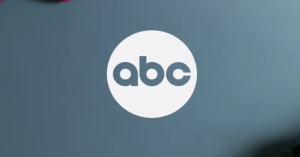The biggest night in fashion is almost here, with the annual Met Gala set to take place at the Metropolitan Museum of Art in New York City on Monday, May 6.
The Met Gala takes place every year on the first Monday in May, which falls on May 6 this year. It’s a collaboration between Vogue and the museum to celebrate that museum’s spring exhibit, which always coincides with the event’s theme.
Videos by PopCulture.com
This year’s theme is Camp: Notes on Fashion, inspired by Susan Sontag’s 1964 essay on the topic that defines camp as “its love of the unnatural: of artifice and exaggeration.”
The broad scope of camp’s definition offers a number of sartorial directions in which to travel, from humorous to theatrical. Sontag notes that “when something is just bad (rather than Camp), it’s often because it is too mediocre in its ambition. The artist hasn’t attempted to do anything really outlandish.” This seemingly indicates that regular red-carpet fare has no place at this year’s Met, with pushing the envelope the name of the game.
It’s fitting, then, that the event will be co-hosted by Lady Gaga and Harry Styles, two artists who have utilized unusual fashion in their own careers in different ways. This year’s gala will be sponsored by Gucci, and the brand’s Alessandro Michele will also co-chair the event, along with Serena Williams and Vogue editor-in-chief Anna Wintour.
Members of the committee include Bradley Cooper, Blake Lively and Ryan Reynolds, Chadwick Boseman, Cam Newton, Lupita Nyong’o, Jennifer Lopez and Alex Rodriguez, Venus Williams and Lena Waithe, according to The Hollywood Reporter, giving an idea of at least a few famous names who will be in attendance on Monday. Designers include Tom Ford, Bob Mackie, Miuccia Prada, Pierpaolo Piccioli of Valentino, Donatella Versace and Clare Waight Keller of Givenchy.
The accompanying exhibit will feature pieces dating from vintage to contemporary, with looks from Viktor & Rolf’s highly-memed Spring 2019 couture collection being featured alongside wardrobe worn at the Court of Versailles, adding up to around 175 pieces of women’s and men’s wear as well as sculptures, paintings and drawings dating back to the 17th century.
“We are going through an extreme camp moment, and it felt very relevant to the cultural conversation to look at what is often dismissed as empty frivolity but can be actually a very sophisticated and powerful political tool, especially for marginalized cultures,” Andrew Bolton, Costume Institute curator, told the New York Times. “Whether it’s pop camp, queer camp, high camp or political camp — Trump is a very camp figure — I think it’s very timely.”
Photo Credit: Getty / Noam Galai








